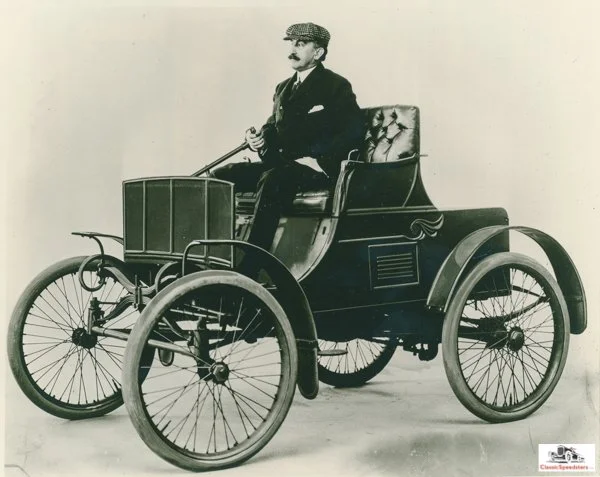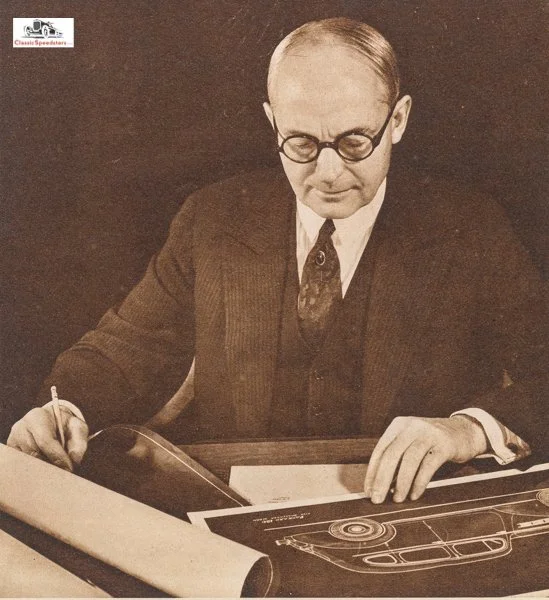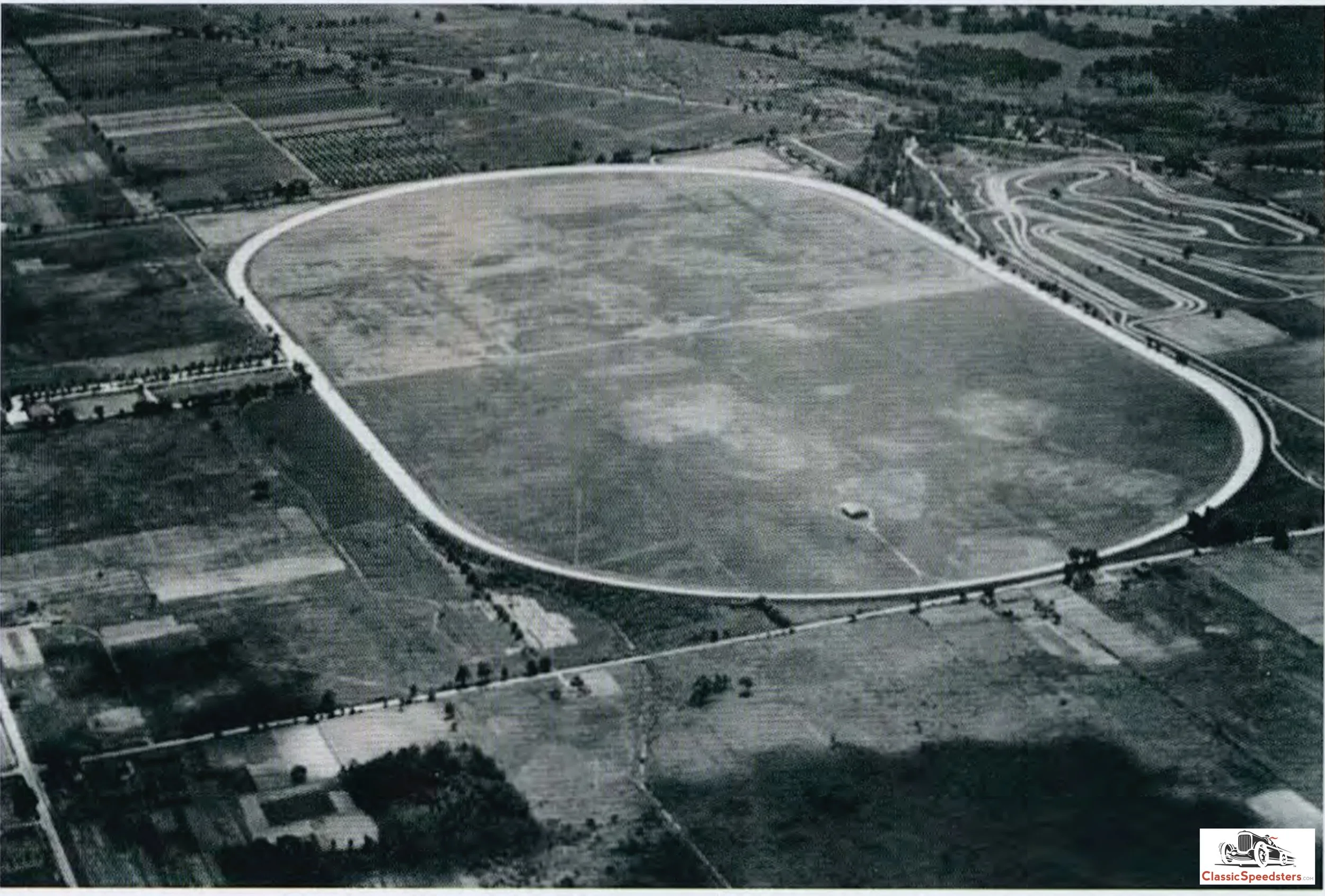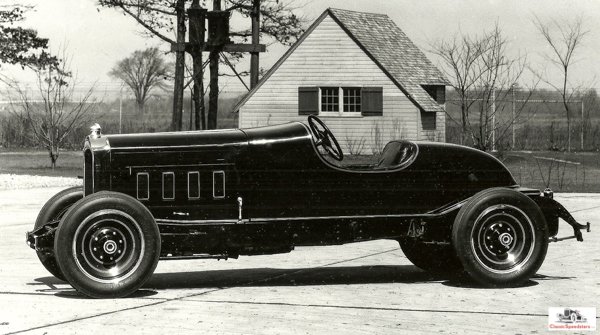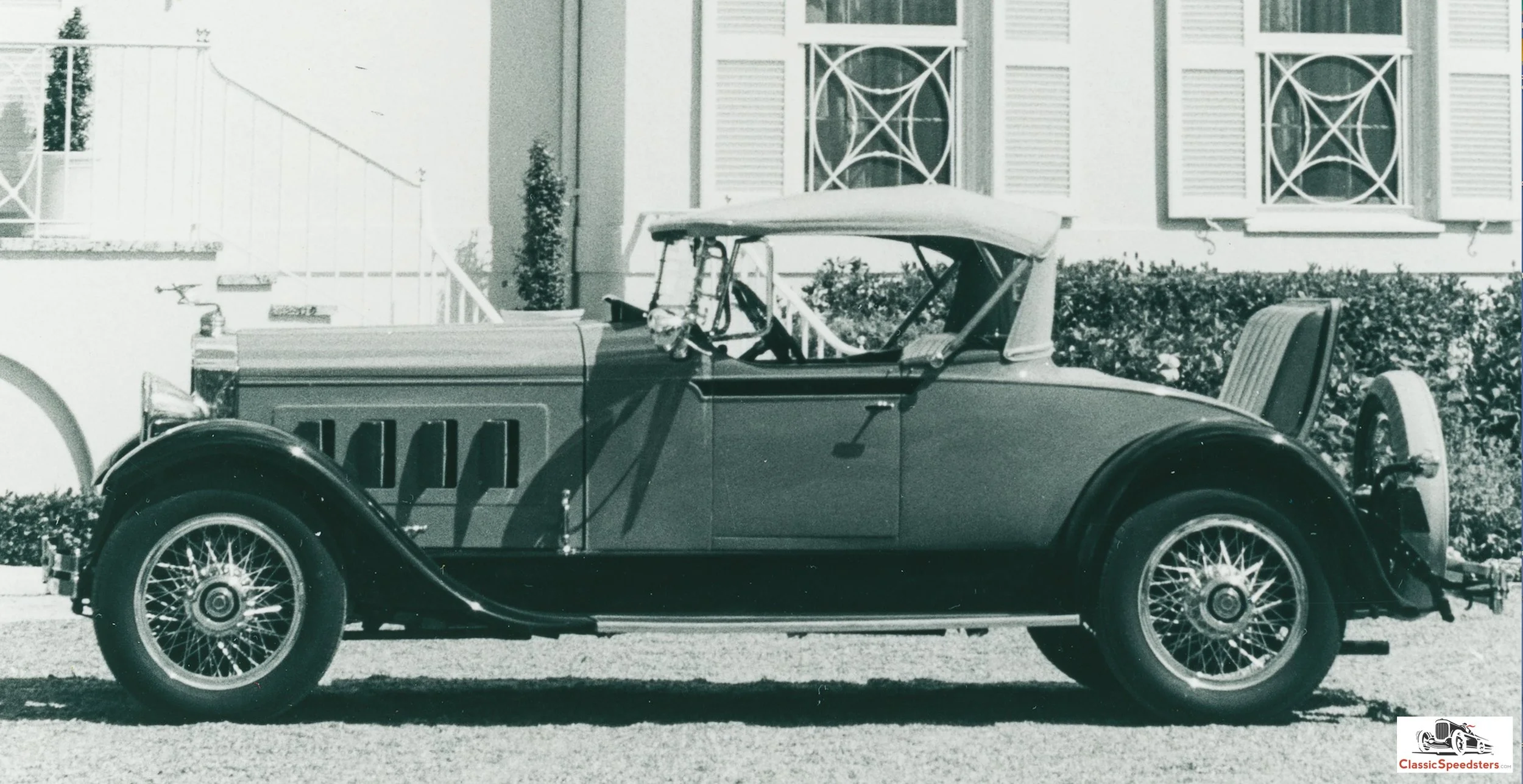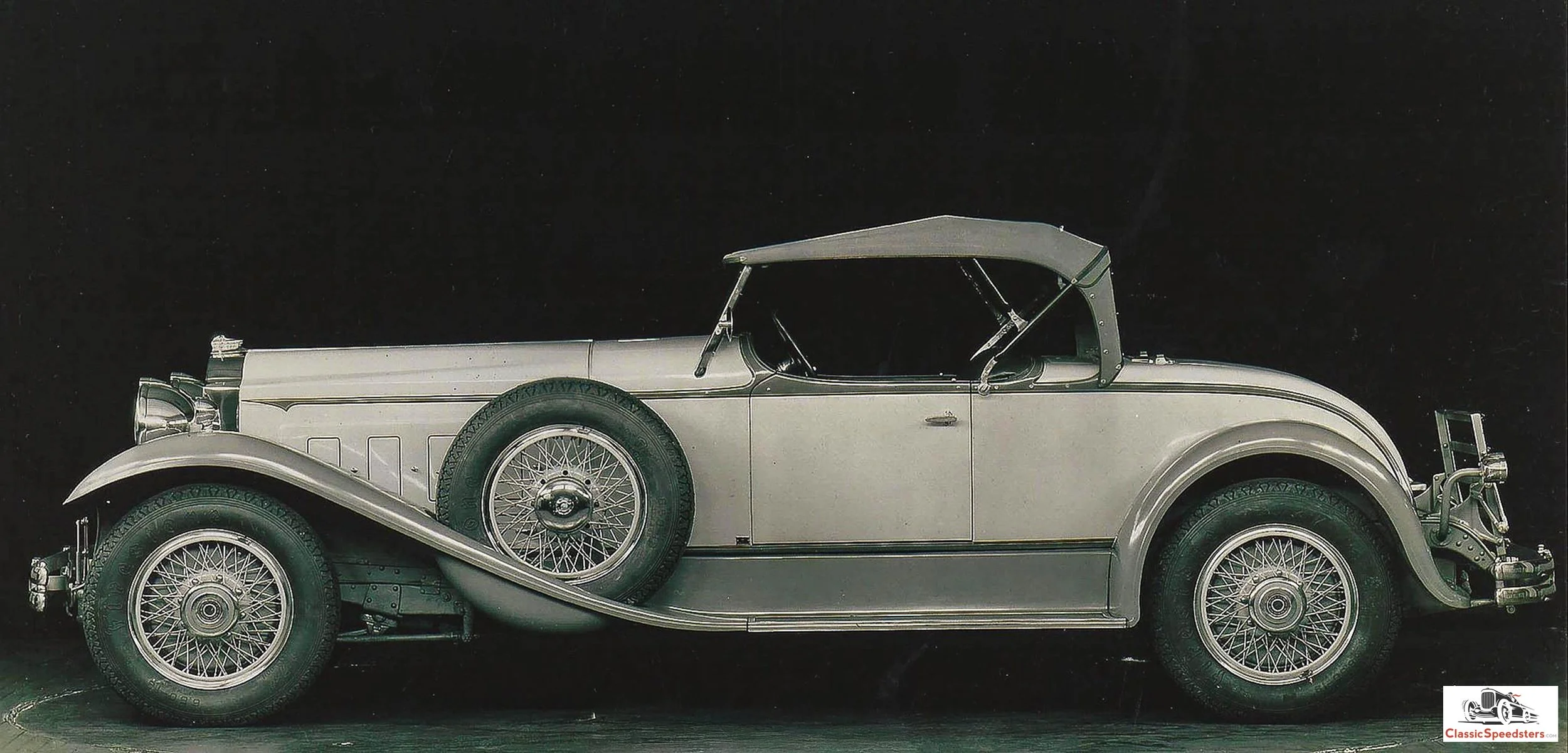Foundational Beginnings
Packard wasn't ever a sports car company, even from its beginning at the turn of the twentieth century. Speed tests, hill climbs, road and track racing in the United States would all come alive in the first decade of the twentieth century, largely ignored by the Packard brothers.
James Ward (l) and William Doud (r) Packard
Wisely, the Packards focused on the need for everyday transportation.
The first Packard, an 1899 edition in conventional buggy form
They decided to produce the sturdiest cars for those who could best afford this newfound luxury—the automobile. This was just Packard being Packard.
The 1904 Gray Wolf was an early Packard speedster that met with some success.
And, despite some privateers adventuring in Packards on tracks and in speed runs, the company pretty much kept that course, offering a superior conveyance to the moneyed crowd.
Vincent Raises the Standard
James A Macauley was the President of Packard through many of its most successful years. Macauley had hired Jesse Vincent in 1915, a gifted mechanical engineer who had speedsterism in his blood. Vincent would design several performance engines and other new technologies for Packard.
Jesse Vincent in 1935
Vincent was responsible for Packard’s first series of 12-cylinder cars, known as the Twin Six series, in 1916.
1916 Twin Six Runabout. image courtesy Audrain Museum
While commissioned as a major in the U.S. Army, Vincent collaborated with Elbert Hall of Hall-Scott Motor Company to design and develop the Liberty V-12 engine that was used in WWI aircraft by the U.S. Army Air Corps.
After the Great War ended in 1918, surplus Liberty engines were sold off and put to use in high-speed powerboats, and Vincent, a speed enthusiast, would inevitably compete in powerboat racing.
Vincent won the 1922 Gold Cup on the Detroit River in a Chris Smith-designed boat, beating five-time winner and renowned boat designer Gar Wood. Vincent’s boat used a Packard-made Liberty V-12; this event inspired Chris Smith to rename his boat company to become "Chris-Craft" in 1924.
Transitioning
In 1926, under President Macauley's leadership, Albert Kahn was tasked to design the Packard Proving Grounds, a 2.5-mile test track and compound that was situated north of Detroit. This 680-acre property would become Vincent’s stomping grounds and home for Vincent’s experimental and production speedsters.
Packard Proving Grounds in 1927
The Vincent Experimental Speedsters
Several testbed speedsters were created beginning in 1927, one of which used an Allison supercharger that produced 160 horsepower from a 384 cid powerplant. Jesse Vincent and others zipped around the Proving Grounds track in excess of 125 miles per hour in them; even Charles Lindbergh propelled an example to almost 110!
This 1928 Vincent Packard Speedster was its final iteration. image courtesy William Bailey collection
The 1928 Vincent Speedster was the epitome of this series. Built on a Series Four chassis that had been shortened to 117 inches, the Vincent Speedster was stripped of all essentials except its body, fitted with a bobbed tail, and weighed a little over 3000 pounds. This version employed a 385 cid eight that would later be used in the production series spinoff, the 626 Speedster Eight.
The 626 Speedster Eight
1928 Series Six 626 Speedster Eight
Although the Vincent Speedster's direct influence on the 626 Speedster Eight is tenuous, the timeline implies a tie that is more than purely coincidental. However, the 1928 626 Speedster Eight differed in that it was built on a 126.5-inch wheelbase using a Standard Eight chassis, and it incorporated components from the Standard 640 body. However, it used the 626 Speedster Eight engine, as did the Vincent Speedster!
Two body styles were produced, a runabout and a phaeton. The runabout was sectioned 14 inches from behind the front seat, eliminating the golf bag compartment but retaining the rumble seat. Almost 450 pounds were trimmed in this move, but the car still weighed in at 3,830 pounds. The 385 used a high-lift camshaft and metric plugs in its high-compression head to produce 130 hp at 3,400 rpm, 40 hp more than the Standard Eight and 25 more than the Custom. The lighter body and narrower chassis made it the speedster version of Packard's line for 1928, and with a 3.31 rear axle it could achieve 100 mph!
Although they were more expensive than other Sixth Series cars at $5,000 each, Packard sold out the production run of 70 units. Still, management was not satisfied with their looks and thus did not advertise them. Instead, they approved a better, swifter-looking successor to compete with the Auburn, Kissel, and other speedsters of that period.
The 734 Speedster Eight
1930 Seventh Series 734 Boattail Speedster Eight at the Packard Proving Grounds
The 734 Speedster Eight answered this need for a sporty-looking Packard. It used the longer Standard Eight chassis to achieve a sleek profile line that the 626 lacked. The highly modified Deluxe Eight 385cid engine was fitted with its own special cylinder block featuring 45-degree exhaust/intake ports. It went onto the 134.5-inch wheelbase chassis, and with a high-compression head, larger valve openings, finned exhaust manifold, exhaust cut-out and a unique dual-throat Detroit Lubricator Model 51 updraft carburetor, it developed 145hp at 3,400rpm.
1930 Seventh Series Boattail 734 Speedster Eight image courtesy West Peterson collection
The chassis of the 734 was reinforced for strength and rigidity. In a Packard News Service bulletin, it was stated that each car was
“tested on the proving ground speedway so thoroughly that it is ready for maximum performance upon delivery. Packard, in talking of the new cars, gives the warning that caution must be exercised in using the Speedster’s maximum power only under the most favorable highway conditions ... special attention has been given to deceleration and stopping because of the great possibilities possessed by the cars in acceleration and speed.”
While the brakes of the Speedster series contained triple shoes as in the other models, the Speedster drums were finned for better cooling.
Four body types were initially available for the Speedster chassis, each coming from Packard’s own “Custom by Packard” body shop. The most popular, priced at $5,200, was a “perfectly streamlined” two-passenger runabout (boattail) with staggered seats — “the driver’s seat being placed slightly forward of the passenger’s seat, as in a racing car to insure the driver against any interference when traveling at high speed.” (Packard News Service)
A phaeton, priced the same as the runabout, along with a victoria and a sedan, both priced at $6,000, were also included in the initial lineup. Both the phaeton and the close-coupled victoria limited passenger capacity to four, while the sedan could seat five.
Soon after, a 2/4- passenger runabout was offered, but with the added rumble seat its rear deck could not feature the tapered boattail line.
The 1930 734 Speedster Runabout was a 2/4 with a rumble seat (hidden)
Speedster bodies were lighter and were several inches lower and narrower than cars in the Standard, Custom, or Deluxe Eight lines. The cowl was lengthened six inches, and with it the windshield, steering column and seating were pushed back, all done to effect length and sleekness in the hood line.
In a fashion similar to the 626 Speedster line, 734 Speedster models were mysteriously devoid of any advertising or print promotion, and a maximum of 118 factory-built units were made available and sold through the Custom Body Division.
Why were the 734 Speedsters neither advertised nor promoted? Certainly the two runabouts and the phaeton were as sleek as their competitors. They could probably outrun the Cadillac V-16 that had been designed to upstage their Packard straight-eight engines; the Caddy had 40 more horses but was also a heavier vehicle.
Packard Speedsters did cater to a youth market that had hitherto been neglected; however, several other factors were in play at this time that might shed light on the lack of advertising and marketing support.
Reasons:
• Packard Speedsters were "strippers"— narrower, lighter, and totally devoid of expensive accessories that raked in huge profits for luxury companies like Packard.
• The buying public in the 1930s was moving away from stylish open cars and toward smaller, more economical, and stodgier transportation
• Speedsters were an expensive toy in a Depression-era economy. Not good timing...
However, Packard was not ready to give up on speedsters, a model that displayed their abilities as a premier car company. In the next episode, we'll continue this important history of an iconic series—the Packard Speedsters.
(Packard images courtesy AACA library unless otherwise attributed)
=An Important Announcement=
We are now offering a digital version of Classic Speedsters. Hooray! Finally!
It took a while to find the right partners to make this happen: Brad at Freisens Publications in Canada produced the document in fixed format, while Claire, a Squarespace expert in South Africa, set up and enabled its delivery system for worldwide fans of the book. I am very pleased with the product, as it makes Classic Speedsters available to the wider world.
A fixed format ePDF freezes each page so that the text does not stray from its assigned page. This ensures that the images will remain correlated with the text that supports them and vice-versa.
Classic Speedsters is best viewed on a desktop computer or a laptop due to the size of the book's pages (10" x 10"). Using Adobe Reader in either single-page or two-page view, you will get the effect of reading a book; I recommend the two-page view.
This is how Classic Speedsters will look on your computer screen in two-page view. That’s 22 inches wide!
You may order your copy at this link and receive an immediate download upon purchase. For the price of $17.97 USD, this is an absolute bargain!
But wait—there's more! Tune in next Friday, November 28, for Part Two of the Packard Speedsters story AND a "Black Friday-Cyber Monday" opportunity to leverage your purchase of Classic Speedsters. Stay tuned!
Until then,
Go drive that Speedster!



